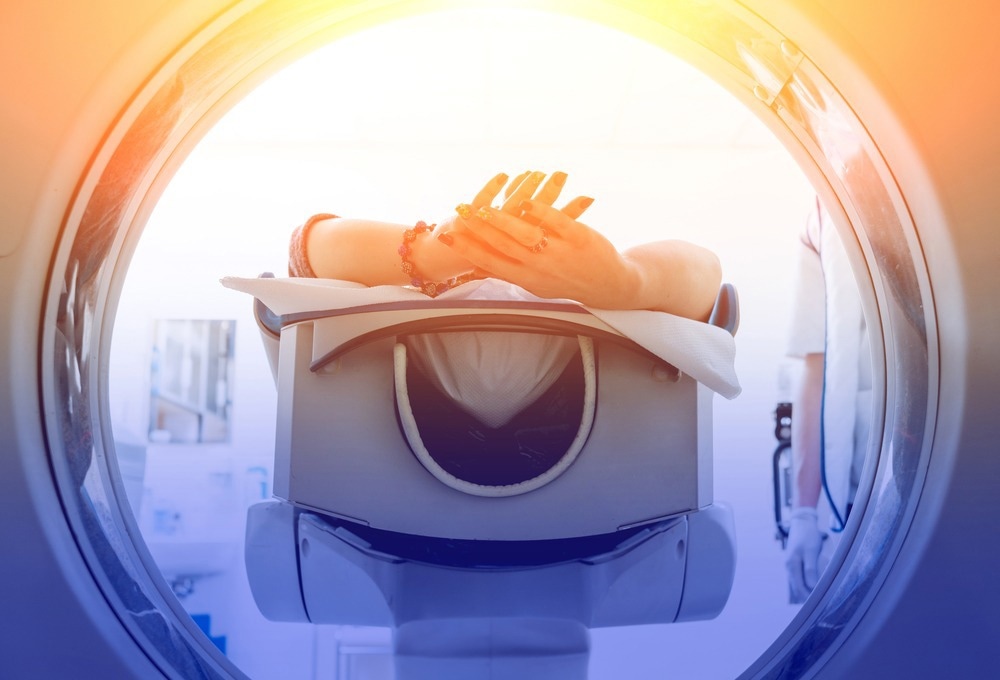According to a recent study published in the Journal of Biomedical Optics, a group of researchers proposed using a single objective lens to produce a line-field confocal optical coherence tomography system based on a Mirau interferometer. A single objective lens allows dynamic adjustment of the camera frequency during scanning.

Study: Mirau-based line-field confocal optical coherence tomography for three-dimensional high-resolution skin imaging. Image Credit: Roman Zaiets/Shutterstock.com
The beam-splitter reflectivity in the Mirau interferometer can be tuned to increase detection sensitivity. The apparatus includes a galvanometer scanner that could scan the light line laterally. It is possible to acquire a stack of B-scans that together produce a 3D image. Line-field confocal optical coherence tomography device improves detection sensitivity and can acquire images more quickly without lowering their resolution.
Line-Field Confocal Optical Coherence Tomography (LC-OCT)
A recently developed high-resolution imaging technique called line-field confocal optical coherence tomography (LC-OCT) combines reflectance confocal optical microscopy with line illumination and detection with low-coherence optical interferometry. The LC-OCT technology's predecessor is the TD-OCT with line detection and illumination rather than point scanning.
A vertical segment image (a B-scan) is produced in LC-OCT by scanning in the depth direction by obtaining numerous A-scans concurrently. As a result, a B-scan can be obtained while retaining a similar acquisition time for the entire image with a scanning rate slower than point-scanning TD-OCT. A high numerical aperture (NA) microscope lens can be focused for imaging with a great lateral resolution by scanning at a frequency of 10 Hz.
Line-Field Confocal Optical Coherence Tomography (LC-OCT) in Dermatology
Line-field confocal optical coherence tomography has mostly been used in dermatology and dermo-cosmetology as it can produce in vivo three-dimensional (3D) images of the skin with cellular resolution. The described LC-OCT systems that capture three-dimensional images are developed around a Linnik interferometer with two identical microscope lenses.
A broadband super-continuum laser is used for high axial resolution imaging as the light source with ultrashort temporal coherence. LC-OCT enables an isotropic image resolution of 1 μm. The linear sensor of the LC-OCT camera, which is optically coupled to the illumination line, serves as a confocal slit by filtering most of the parasitic out-of-focus light. As a result, the total signal-to-noise ratio (SNR) is strong enough to provide real-time in vivo imaging in highly scattering tissues like human skin at depths of up to 400 μm.
Limitations of LC-OCT
The LC-OCT systems reported so far are capable of taking three-dimensional (3D) images and are based on a Linnik interferometer with two identical microscope objectives. The devices could not be made very small and light in this configuration. The inertia caused by the bulk being moved only allows a 10 Hz B-scan acquisition rate. Recently, a Mirau interferometer-based LC-OCT device with the advantages of being smaller and lighter is proposed.
Development of Mirau Interferometer-based LC-OCT
Xue et al. developed an LC-OCT system based on a Mirau interferometer that can acquire 3D pictures in addition to B-scans. The 3D image can be post-processed to provide cross-sectional images with any orientation, including horizontal section views. The LC-OCT apparatus is detailed, together with the specially created Mirau interferometer. Performance is described in terms of acquisition speed and spatial resolution. To demonstrate how the LC-OCT gadget can provide 3D images of the skin in vivo, the researchers exhibited the images of skin tissues.
Research Findings
In this research, the researchers have demonstrated an enhanced LC-OCT system based on a Mirau interferometer that can capture and display B-scans at 17 frames per second. 3D images with a quasi-isotropic resolution of 1.5 μm can be produced by stacking B-scans at various positions. The system can show 3D images of human skin at a cellular level. At 17 fps, the B-scan capture rate breaks all previous records for LC-OCT.
The reported Mirau-based LC-OCT device acquired B-scans roughly twice as quickly as the traditional LC-OCT devices based on a Linnik interferometer. A faster operation speed was attained by dynamically adjusting the camera frequency during the depth scan to account for the trajectory's nonlinearity and using a quicker camera and a more potent light source. A greater speed was made possible by reducing the mass needed to oscillate. According to reports, the fastest frequency-domain OCT devices can acquire A-scans up to 300 kHz and even up to 20 GHz by obtaining 4 A-scans simultaneously. They can produce B-scans made of 2048 A-scans at a speed of up to 104 frames per second for comparison with the LC-OCT gadget produced in this research.
Reference
Xue, W., Ogien, J., Bulkin, P., Coutrot, A.-L., & Dubois, A. (2022). Mirau-based line-field confocal optical coherence tomography for three-dimensional high-resolution skin imaging. Journal of Biomedical Optics, 27(8), 086002. https://www.spiedigitallibrary.org/journals/journal-of-biomedical-optics/volume-27/issue-8/086002/Mirau-based-line-field-confocal-optical-coherence-tomography-for-three/10.1117/1.JBO.27.8.086002.full
Disclaimer: The views expressed here are those of the author expressed in their private capacity and do not necessarily represent the views of AZoM.com Limited T/A AZoNetwork the owner and operator of this website. This disclaimer forms part of the Terms and conditions of use of this website.